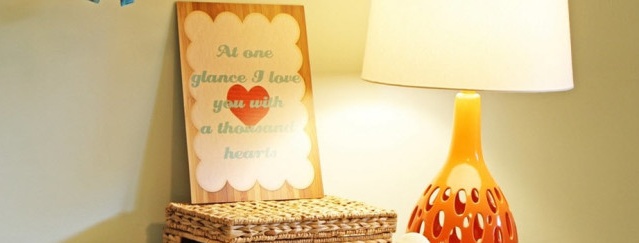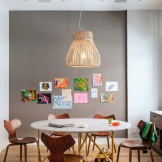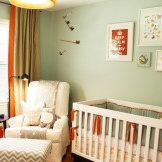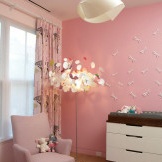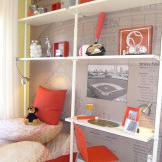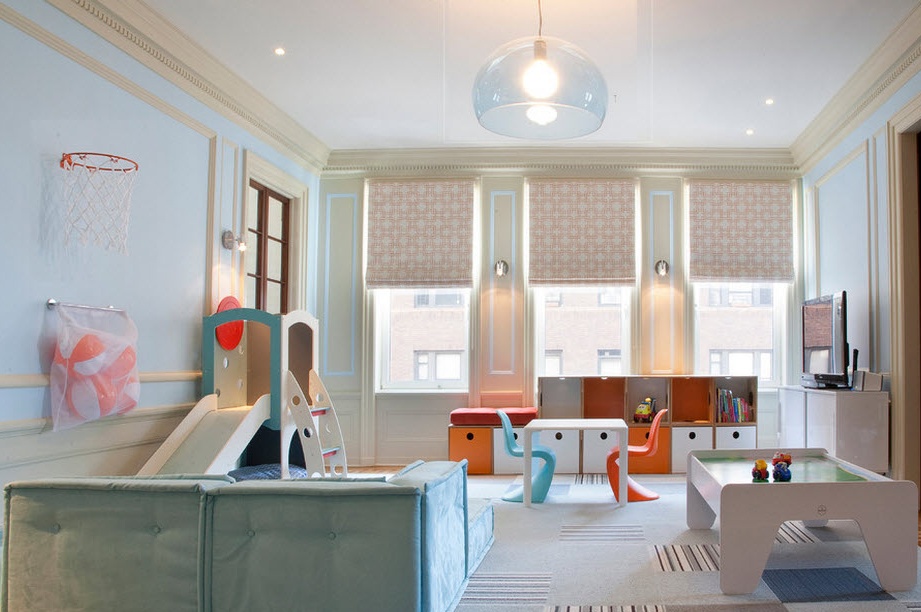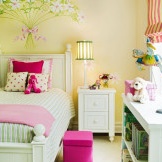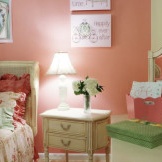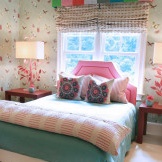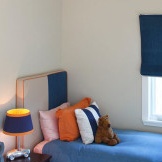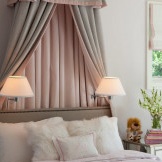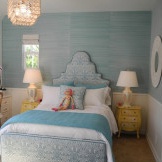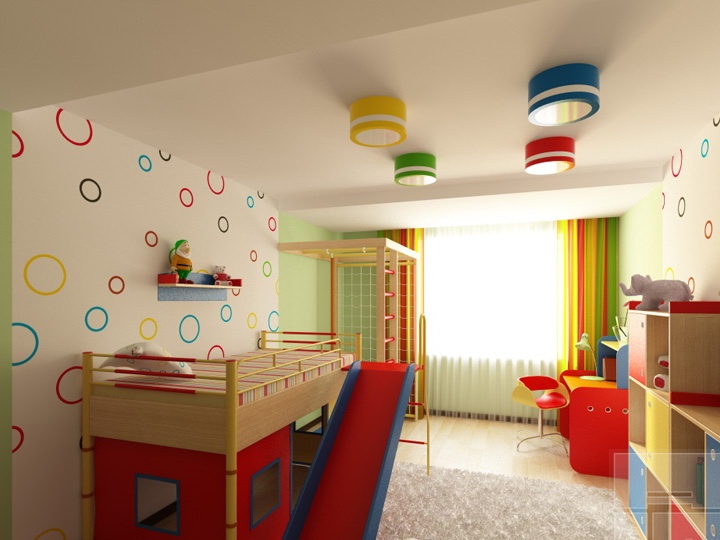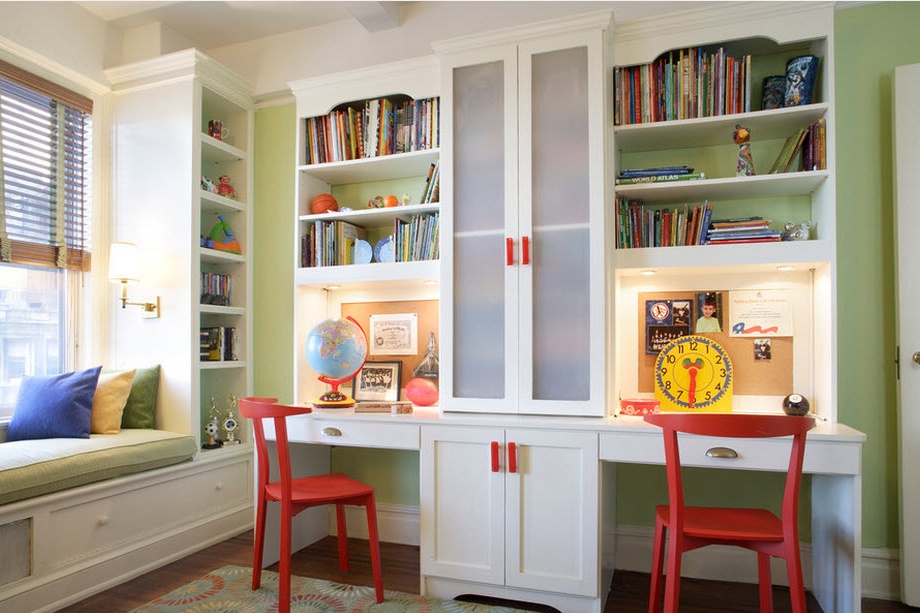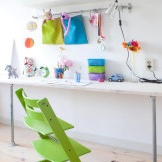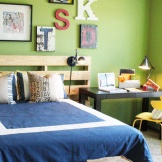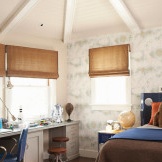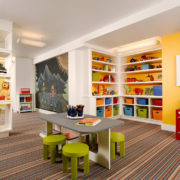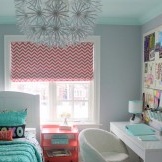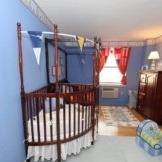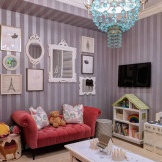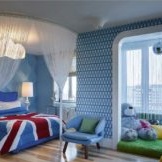Proper lighting of the children's room is the key to the health and successful development of the child!
A children's room for a child is at the same time a bedroom, a playroom, a creative workshop, and an office. And from the competent organization of lighting in such a multifunctional zone, the overall well-being of the baby, his psychological mood and the state of the nervous system depend. So, in the daytime, a room filled with the sun is lively and noisy, and in the evening soft light contributes to a more calm, peaceful atmosphere.
In addition to the normal functioning of the body and a certain vitality, light forms vision. And the child’s vision should be formed at the most optimal lighting, so it is extremely important not to allow too dim or bright light.
Conventionally, light sources are divided into natural and artificial.
Important function of daylight
Of course, natural light is optimal for a child, therefore, for the nursery, you need to highlight the brightest room in the house. Carefully look in which direction the room is directed. The most favorable location is east or south-east. In this case, in the morning, the sun's rays have a beneficial effect on your child, which is very important in the formation of habits, emotional state and lifestyle.
The western part of the room is not suitable for a child, since sunlight will penetrate here only in the afternoon, and the morning, on the contrary, will be gloomy. Also, the northern part of the house requires additional lighting. Here, the baby will really miss the sun's heat and light, which makes him moody and scattered.
If there is not enough natural light, replace the curtains with more airy and transparent ones. Optimal for the child will be blue, green and yellow tones during design, but the red and orange lampshades adversely affect the children's psyche.
We select artificial lighting competently
The basic rule that you must follow when choosing artificial lighting is the mandatory presence of evenly scattered soft light throughout the space. In the children's room there should not be harsh, too bright lighting, dark corners - only smooth light transitions are allowed.
The location and number of fixtures will depend on the size of the room. Now designers recommend conditionally dividing the space into zones. According to age, the child’s room is divided into 3 main areas - the working, play and recreation areas, and each of them has separate requirements for artificial lighting.
The ideal solution would be to create light levels: the top light is distributed over the playing area, away from natural sources; middle - in the central part of the room or in an angular displacement, i.e. where there is a soft corner. Opposite it, traditionally have a computer table or TV. In this case, projecting onto an ordinary room, one wall has a working light, and the other remains without light. The third level is the lighting of the working corner. Usually they use table lamps, lights, lamps.
And the last level is the light above the crib. Often it is replaced by lighting on the desktop or game area, and this is not always correct. After all, an individual nightlight with the obligatory presence of adjustable power will create a certain intimate atmosphere over the crib, which is especially important in adolescence.
The game area should be lit most intensively. Place a bright lamp directly above it, because here the baby spends a lot of time.If the play area is located in the very corner of the nursery, make a two-level ceiling, hang a ceiling lamp above it, and illuminate the rest of the area with the help of halogen built-in lamps. A great idea is to place the lamps all over the ceiling: above the playing area and over the entire area of the rest of the space. This option is perfect for long rooms.
In a room for two or three children, lighting should be organized so that the recreation area, play area and work area are clearly distinguished. For example, when one child is busy with lessons, and the second is already preparing for bed, the light above the desktop should not interfere with a good rest.
Safety comes first!
When equipping a nursery, pay special attention to safety. It is important that all lighting devices are inaccessible to children, because a curious kid can begin to study the internal structure of the lamp.
Volumetric chandeliers in a nursery can lead to a sad outcome, for example, when the baby plays the ball. Plastic fixtures have one definite advantage: if such a lamp breaks, the child is unlikely to get hurt. But if glass models are still preferred, tempered glass shades are quite suitable.
Avoid long wires - they will deliver a lot of inconvenience to small fidgets. Therefore, the location of the outlets must be considered, given the arrangement of furniture. Floor lamps are also undesirable: kids need outdoor games, during which such elements can accidentally tip over. Portable models of table lamps are best replaced with ones that can be attached to a wall or to a table. An excellent solution is children's lamps on brackets or a pendant lamp that moves easily in the horizontal direction. A long cord allows you to use it over the work area, and at the bed, and in the playground.
Make sure that the lamp itself is closed. So, doing the lessons, the child will not touch the incandescent device and will not get a burn, and if the lamp suddenly falls, the fragments will not fly anywhere.
Outlets in the baby's room are needed both for connecting a table lamp and a night lamp, and for a vacuum cleaner during cleaning. They, like switches, should be located in inaccessible places. Choose sockets protected by plastic covers, or models with increased safety, in which the protective curtains open exclusively when two contacts are inserted at the same time. Such security will not allow even the most inquisitive little researcher to harm himself.
So, to summarize, I would like to note the most important points:
- Luminaires must be carefully strengthened by professionals in accordance with all safety rules.
- Give preference to unbreakable models.
- In the room of the growing kids, the lighting devices should be in an inaccessible zone for them: suddenly a little fidget wants to see how this luminous object is arranged.
- All wires must be hidden, and sockets must be selected with special locking devices.
Lighting: make the right choice!
When buying a lamp for a nursery, first of all, pay attention to the following indicators:
- energy power - the light should not be dim, but at the same time not too bright;
- durability - sconce shades should be easy to remove and not heat up;
- light control;
- simplicity in leaving;
- specific color of light from the device.
When buying a glass lamp, give preference to frosted glass models, since glossy shades usually give glare, which is harmful to the child’s eyes. The best option is a fabric or paper lampshade, these models are the safest.
Choose small fixtures with a simple design without any decoration. The shape of the device must be flat, which contributes to uniform light scattering.
Having calculated the required power, you will ensure the correct lighting in the nursery: 10-15 watts per 1 sq.m, and 50-60 watts per 1 sq.m for the game and work area.
Organize the now fashionable so-called “perimeter” light in the room with the help of halogen lamps, when small bulbs are mounted around the perimeter of the ceiling, creating a soft, diffused and very favorable light for your child. Such lighting is ideal for a small room to visually increase the space. For a very miniature nursery, use wall lights and sconces - they give directional lighting to a specific area.
Another option specifically designed for children is models on suspended ceilings. Round (glazed), in the form of stars, glass balls, they give a lot of original lighting effects. Such lamps should be placed in groups correctly, distributing along the walls, in corners, or over the entire surface of the ceiling. Their large abundance (1 device per 1 sq. M) can completely replace the main light source.
As for nightlights, their choice can be treated more loyally. Today, manufacturers produce many interesting and funny models in the form of a typewriter, flower, butterfly, or character from a favorite cartoon. Try to choose lamps in a single style and color composition - this will give an original aesthetic effect.

